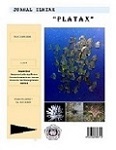The Inhibitory Power Extract Of Balsamica Plant (Impatiens balsamica L) on Aeromonas hydrophila Bacteria Growth
DOI:
https://doi.org/10.35800/jip.2.2.2014.7147Abstract
This research aimed to assess the potential use of extracts of leaves, flowers, and stems of the balsamica plant increase inhibitory effect on the growth of Aeromonas hydrophila. The content of the plant contains a compound balsamica naphthoquinone, coumarin derivatives, tannins, flavonoids, and steroids. The active compounds have the ability as an antimicrobial. A hidrophyla bacteria, including opportunistic pathogens are almost always found in water and often cause disease when the fish in adverse conditions. Antibacterial activity test in this research using the spread plate method. Data obtained in the form of the extract, the results of bacterial inoculation, and the inhibition test results, will be analyzed, displayed with pictures and described descriptively. The result of the process of maceration extraction using ethanol 70% was obtained three extracts are concentrated leaf extract: 28.75 g, flower: 12.82 g, and rods: 29.48 g. The result of antibacterial extracts of leaves, stems, and flowers balsamica plant showed inhibitory activity on the A hydrophila bacteria that seems to be indicated by a clear zone around the paper disc. Based on the classification of leaf extract and extract of the stem can be classified in the class of strong, because the inhibition zone formed by the leaf extract is equal to 11.2 mm, and extract stem with 13.7 mm inhibition zone. Ability flower extract in inhibiting the growth of A hidrophila bacteria with 21.4 mm inhibition zone showed that the extract was included in a very strong class.
Keywords: The ethanol extract balsamica, Impatiens balsamica L, Aeromonas hydrophila, antibacterial activity test.
Downloads
Published
How to Cite
Issue
Section
License
COPYRIGHT
Authors who publish with this journal agree to the following terms:
Authors hold their copyright and grant this journal the privilege of first publication, with the work simultaneously licensed under a Creative Commons Attribution License that permits others to impart the work with an acknowledgment of the work's origin and initial publication by this journal.
Authors can enter into separate or additional contractual arrangements for the non-exclusive distribution of the journal's published version of the work (for example, post it to an institutional repository or publish it in a book), with an acknowledgment of its underlying publication in this journal.
Authors are permitted and encouraged to post their work online (for example, in institutional repositories or on their website) as it can lead to productive exchanges, as well as earlier and greater citation of the published work (See The Effect of Open Access).




















